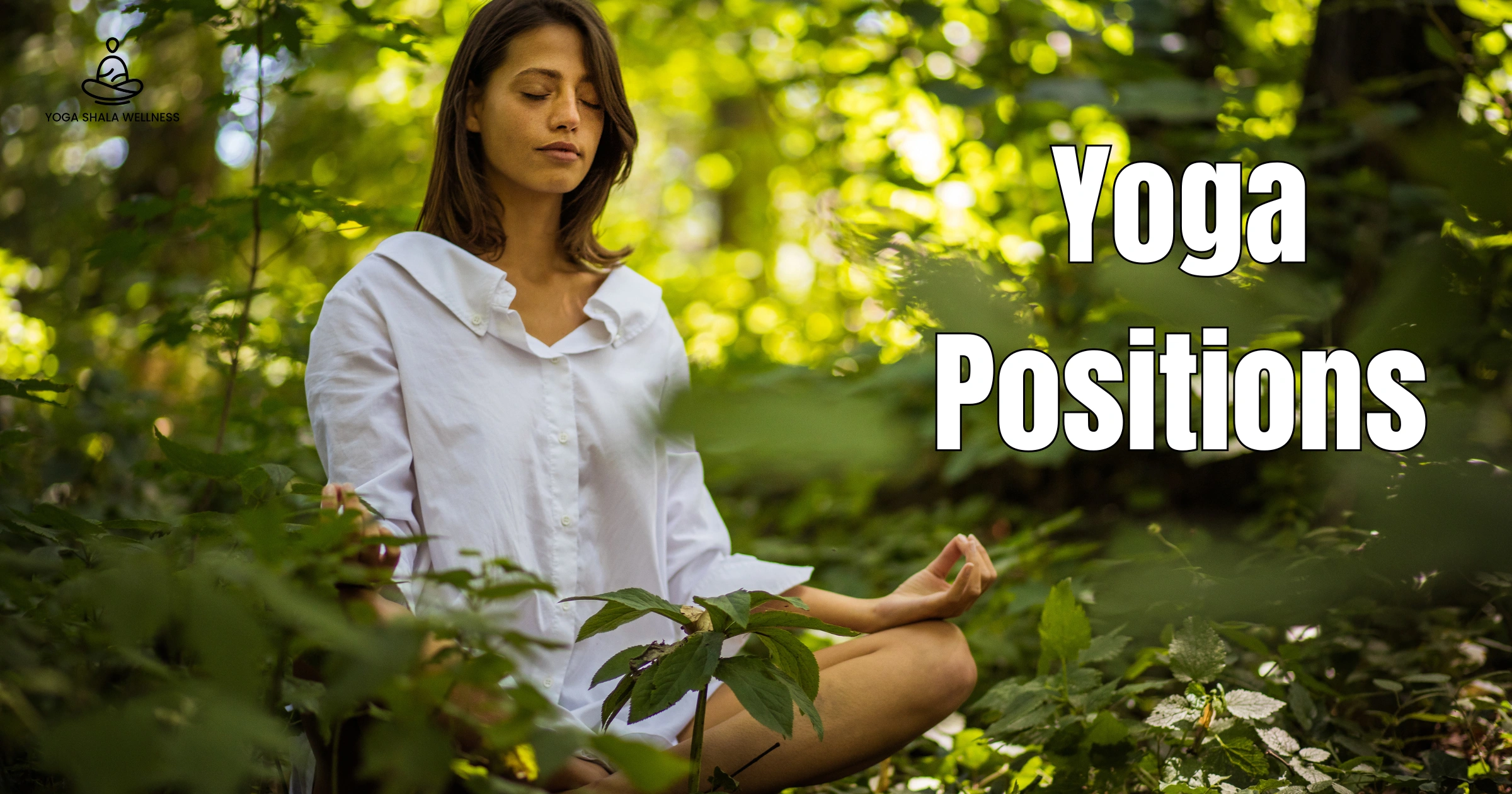Originating in India over 5,000 years ago, yoga is a profound and ancient practice that integrates physical postures, breathwork, awareness, and spiritual connection. It’s more than just exercise; it’s a holistic system for the body, mind, and soul.
At the foundation of yoga are the asanas (physical postures), which help practitioners build strength, flexibility, and concentration. But if you’ve ever stepped foot in a yoga studio or thumbed through a yoga book, you may have found yourself wondering: How many yoga poses are there in total?
The Origins of Yoga Poses
When yoga was originally described in ancient texts, the asana did not mean stretching postures numbering in the hundreds. Instead, it meant a straightforward “seat”—a stationary posture of the body suitable for meditation. In Patanjali’s Yoga Sutras (circa 400 CE), one of the foundational works of yoga philosophy, asana is mentioned as one of the eight limbs of yoga. But Patanjali doesn’t describe a catalog of poses. He simply says:
“Sthira sukham asanam”—A posture should be steady and comfortable.
This means that the earlier yogis were not enthusiastic about gymnastics or athleticism. Instead, they sought to find a posture in which they might remain for long periods of sitting meditation without being bothered. Later on, from the Hatha Yoga era (9th – 11th centuries CE), the body aspect of yoga grew.
Yogis began employing different poses to not only condition the body for meditation but also to improve health, invigorate energy, and control prana (life force). Asanas thus gradually evolved from mere basic sitting poses to a vast repertoire of motions, bends, twists, and balances.
Also Read: 21 Basic Yoga Poses for Beginners
Types of Yoga Poses
Rather than memorizing a numerical figure, it is preferable to understand how asanas are classified. Each category serves the body and mind in a distinct manner.
- Standing Poses: These poses build strength, stamina, and balance. They include foundational postures like Mountain Pose (Tadasana), Triangle Pose (Trikonasana), and the Warrior series (Virabhadrasana I, II, III). Standing postures energize and center the body.
- Seated Poses: They are calm and grounding. Classical seated asanas assist in the form of Lotus Pose (Padmasana), Staff Pose (Dandasana), and Hero Pose (Virasana). They increase hip flexibility and encourage deep breathing.
- Forward Bends: Forward bends extend the spine and calm the nervous system. Some of these are Seated Forward Bend (Paschimottanasana) and Standing Forward Fold (Uttanasana). They’re excellent for stress relief.
- Backbends: These heart-opening poses energize and empower the spine. Some of these are Cobra Pose (Bhujangasana), Bridge Pose (Setu Bandhasana), and Wheel Pose (Chakrasana). They align the posture and awaken circulation.
- Twists: Twisting postures such as Half Lord of the Fishes (Ardha Matsyendrasana) and Revolved Triangle Pose (Parivrtta Trikonasana) detoxify and enhance spinal flexibility.
- Inversions: They are postures with the head below the heart, e.g., Headstand (Sirsasana), Shoulderstand (Sarvangasana), and Handstand (Adho Mukha Vrksasana). They stimulate blood flow and build confidence.
- Balancing Postures: Postures such as Tree Pose (Vrikshasana) and Crow Pose (Bakasana) challenge concentration, coordination, and strength. They are psychologically stabilizing.
- Restorative/Relaxation Poses: Some examples of these poses are Child’s Pose (Balasana) and Corpse Pose (Savasana). These allow the body to gain the advantages of practice and peacefully calm the mind.
By exploring each type, practitioners gain a harmonious yoga experience that feeds the body, calms the mind, and enhances awareness.
Also Read: How long should a yoga session be?
Classical references to the number of Asanas
Different ancient books speak of different numbers of yoga postures, and it is confusing for newbies.
84 Asanas—The Holy Number
Yogic tradition generally refers to 84 traditional asanas as especially important. In Hindu spirituality, the number 84 symbolizes completeness. Some yogic schoolings are of the belief that there are 8.4 million possible poses—all forms of life—and 84 were chosen as of special benefit to humankind.
Hatha Yoga Pradipika (15th century)
This classic book is responsible for 15 major asanas. They were considered sufficient to purify the body and prepare it for higher yogic exercises.
Gheranda Samhita (17th century):
This book describes 32 asanas in detail, calling them the most important for the health of human beings.
Shiva Samhita:
It counts for 84 asanas, though it only elaborates on a handful.
From all these sources, we can see that the number of asanas was never ever exactly established, yet there was always some kind of feeling that only some finite number were strictly necessary.
Also Read: What Is the Attribute of Purity in Yoga
Modern Yoga and the Explosion of Postures
Flash forward to the 20th century, and yoga extended from India into the Western Hemisphere. With this growth came creativity. Instructors like Krishnamacharya, B.K.S. Iyengar, Pattabhi Jois, and Indra Devi started structuring yoga in a manner pleasing to contemporary students.
- Iyengar Yoga: Renowned for its focus on alignment and precision, Iyengar’s approach documented several hundred asanas and their variations. He encouraged application of props (blocks, belts, bolsters) to make the asanas accessible to all body types.
- Ashtanga Vinyasa Yoga: Popularized by Pattabhi Jois, the system introduced a methodical series of asanas performed in a continuous sequence. Advanced practitioners can perform dozens of asanas in a single practice.
- Modern Styles (Vinyasa, Power Yoga, Hot Yoga, Yin, etc.): Modern yoga is still evolving, with teachers inventing new styles all the while. Take hybrid poses, for instance, dynamic transitions, and modifications for athletes, seniors, or injury-prone individuals.
As such, the variety of yoga poses today is almost unlimited. Even though ancient texts wrote about a dozen or so, modern yoga has enumerated hundreds, even thousands, of asanas and their variations.
Also Read: Is Yin Yoga a Waste of Time?
The Symbolic Number: 84 Asanas
The number 84 has fascinated yogis for millennia. While there is academic debate as to whether it is a precise list or metaphorical teaching, the message is clear: yoga is about depth, not quantity. Some schools of thought say that Adi Yogi Lord Shiva himself designed 8.4 million asanas, each representing a type of life on this earth. Of these, 84 were chosen as required for the human being.
The number 84 is also prevalent in spiritual practices, signifying wholeness, cycles of life, and cosmic harmony. Therefore, although modern yoga may teach hundreds of asanas, the number 84 brings to mind that what matters is not the count we follow but the level to which we connect with them.
How Many Yoga Asanas Are Practiced Nowadays?
Depending upon the level of practitioners, the number of asanas varies:
- Beginners: Usually start with 15-30 foundational poses, such as Mountain Pose, Downward Dog, and Warrior. These are enough to build up strength, flexibility, and body awareness.
- Intermediate Practitioners: Expand their practice to 50–100 poses, such as more challenging twists, balances, and backbends.
- Advanced Yogis: Try out hundreds of asanas, refining transitions, variations, and advanced sequences.
When you include all the potential variations—hand position changes, leg lifting, use of props—the number of yoga postures in existence easily reaches 1,000 or more.
Also Read: 900 Calorie Diet a Day
Conclusion: How many yoga positions are there ?
The number of yoga poses, or asanas, varies depending on the perspective:
- Historically: Traditional texts typically cite between 15 and 84 main asanas.
- Symbolically: The number 84 represents wholeness and the essence of yoga.
- Practically: Modern yoga encompasses hundreds, and even thousands, of asanas and their combinations.
However, the true essence of yoga lies not in the quantity of poses but in the mindful execution of each. Yoga is less about mastering a fixed set of positions and more about cultivating awareness, balance, and inner harmony. Even a single pose, practiced mindfully, can be transformative.
Therefore, whether your practice involves a dozen foundational poses daily, the symbolic 84, or a multitude of contemporary variations, remember that yoga is about personal growth and transformation, not about the sheer number of poses.
If you’d like to continue your yoga journey, discover more insights at Yoga Shala Wellness

